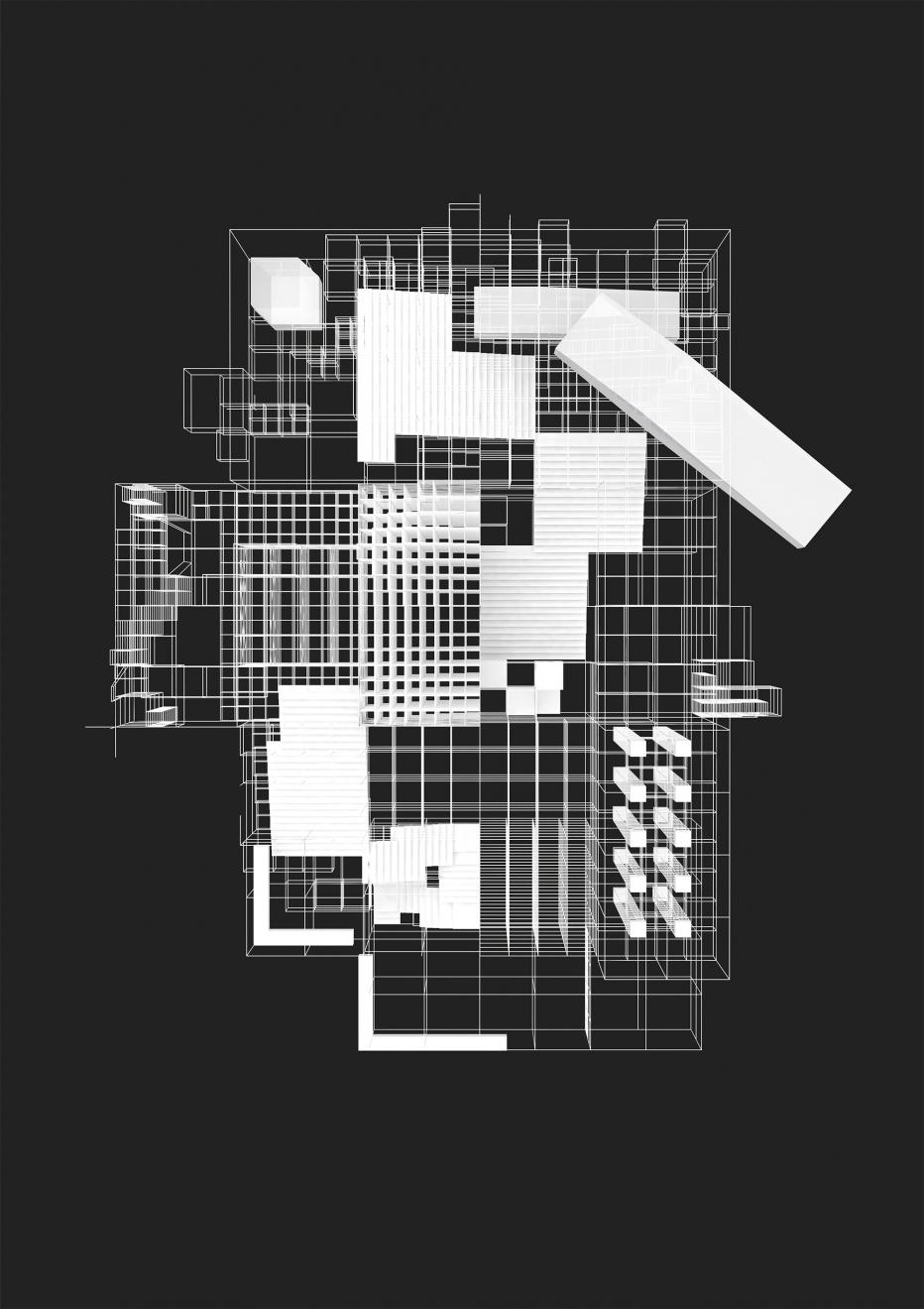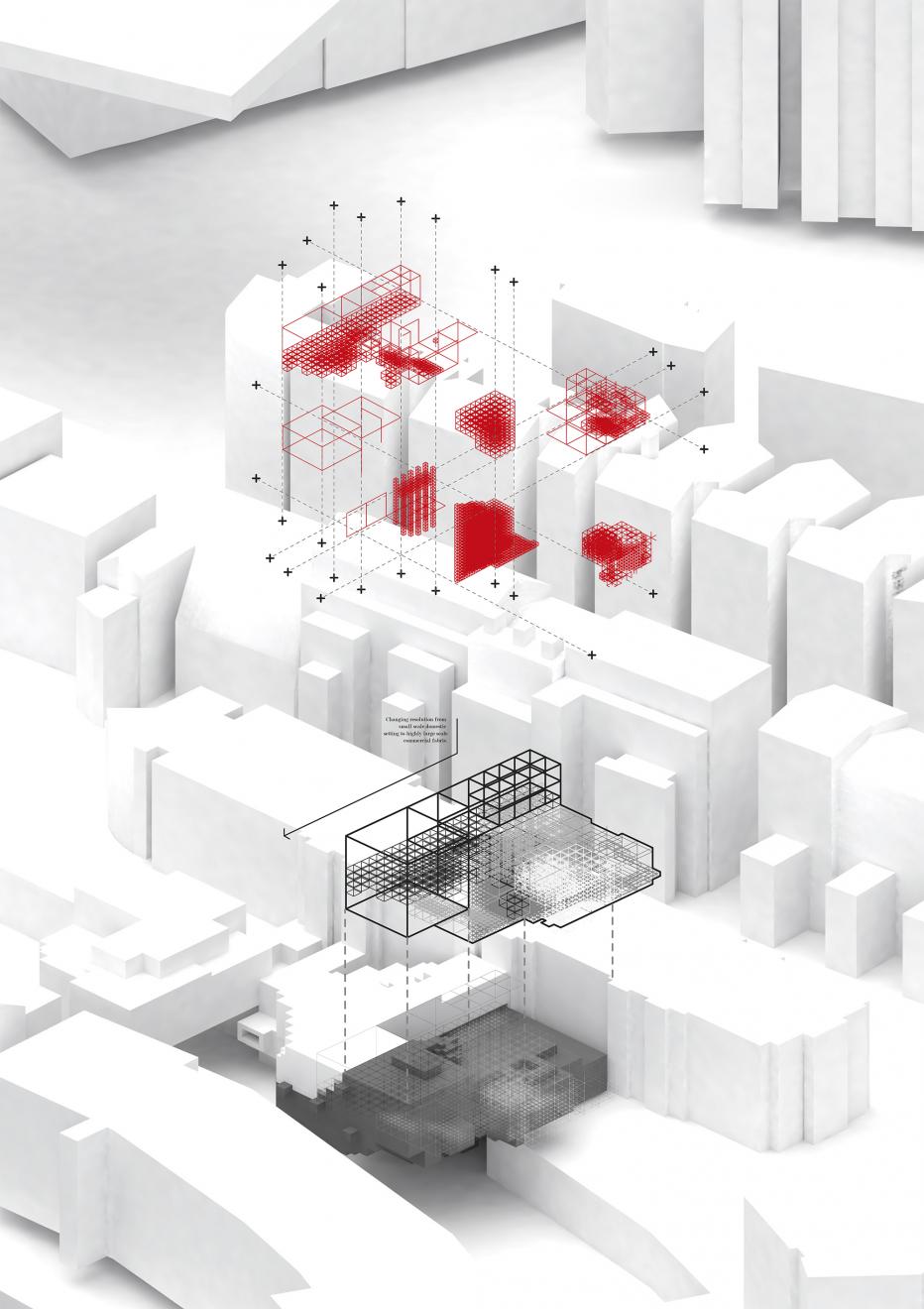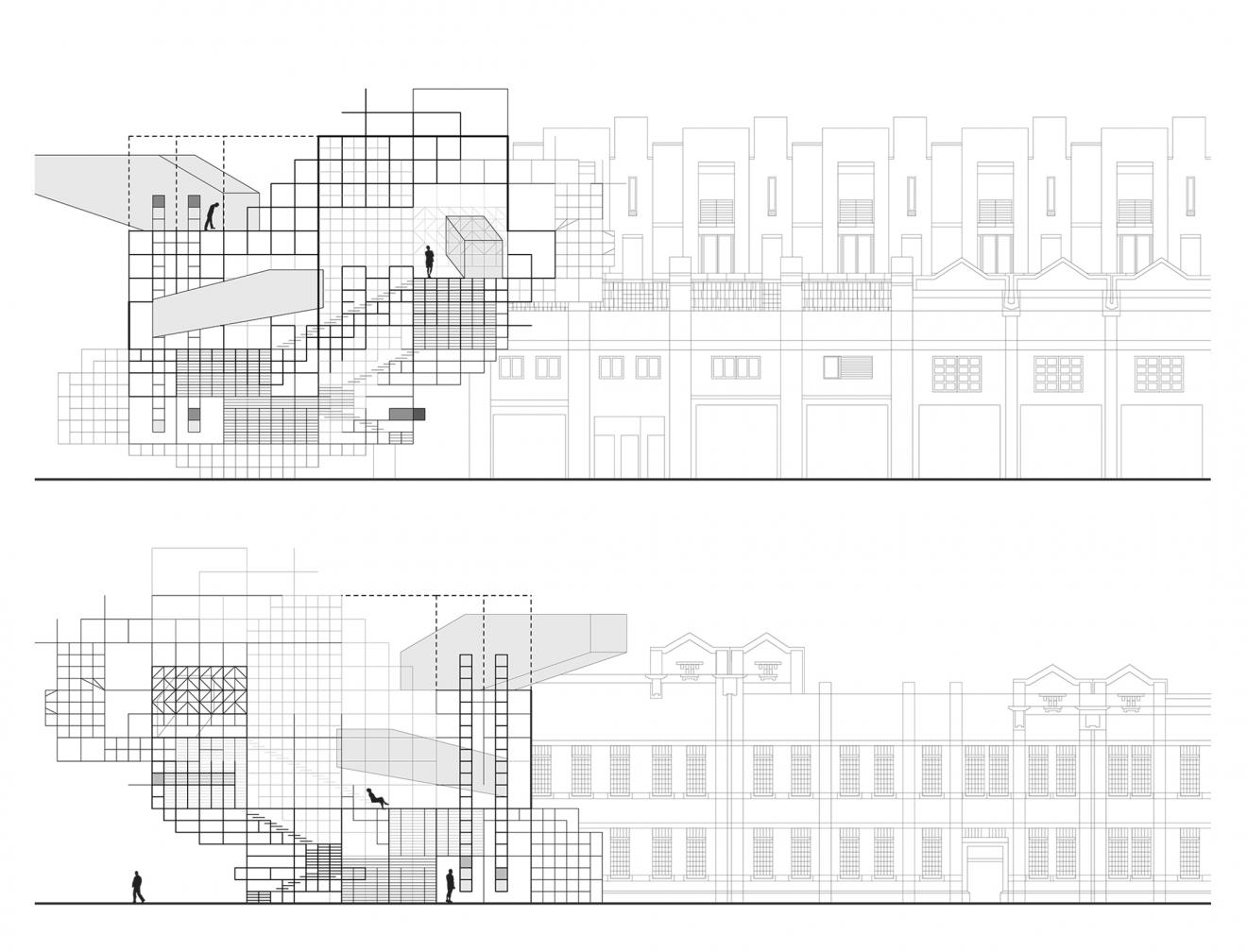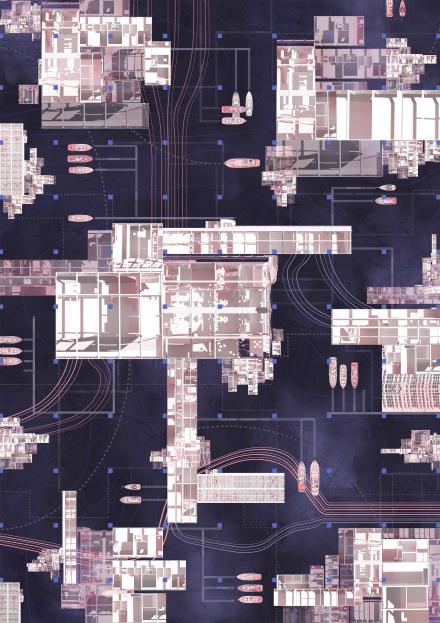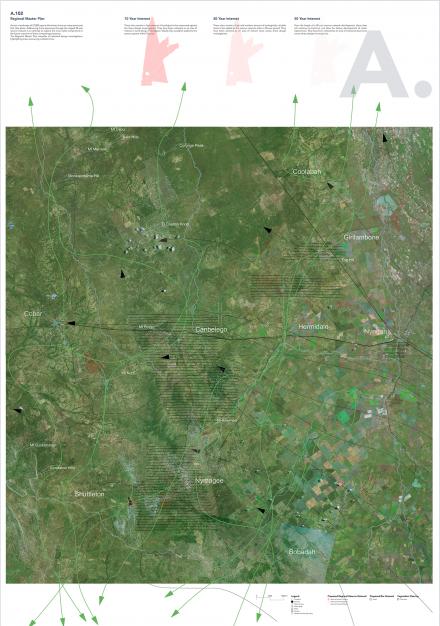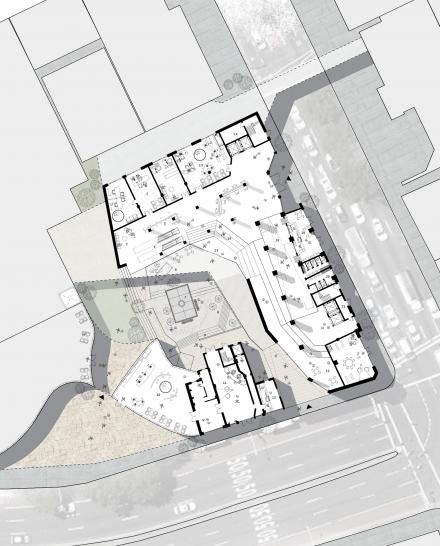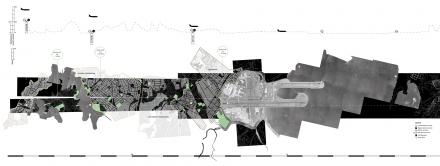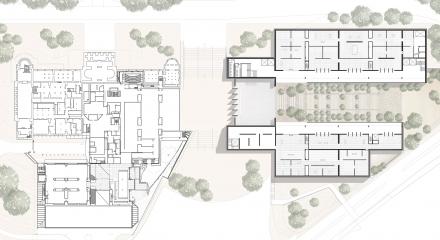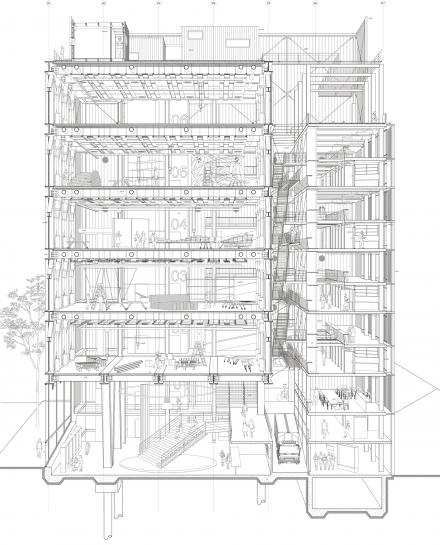In the first studio of the second year of the Bachelor of Design in Architecture sequence, students are introduced to the strategic incorporation of program (different uses) and context that affect our ways of inhabiting spaces. The application of both qualitative and quantitative methods permitted students to incorporate urban, programmatic, environmental, and social interactions within their architectural proposals for a gallery extension.
Maps and diagrams were the basis for exploring the relationships between context, program and spatial organisation. The maps and diagrams encouraged an iterative design process based on reconfiguring extracted and abstracted spatial effects and affects. An important part of this process was the ability to return this extracted and abstracted information back into tectonic architectural form. Consequently, the subject uses animated three-dimensional modes of representation to test, critique and develop a strategic organisation and rematerialisation of this spatial information.
